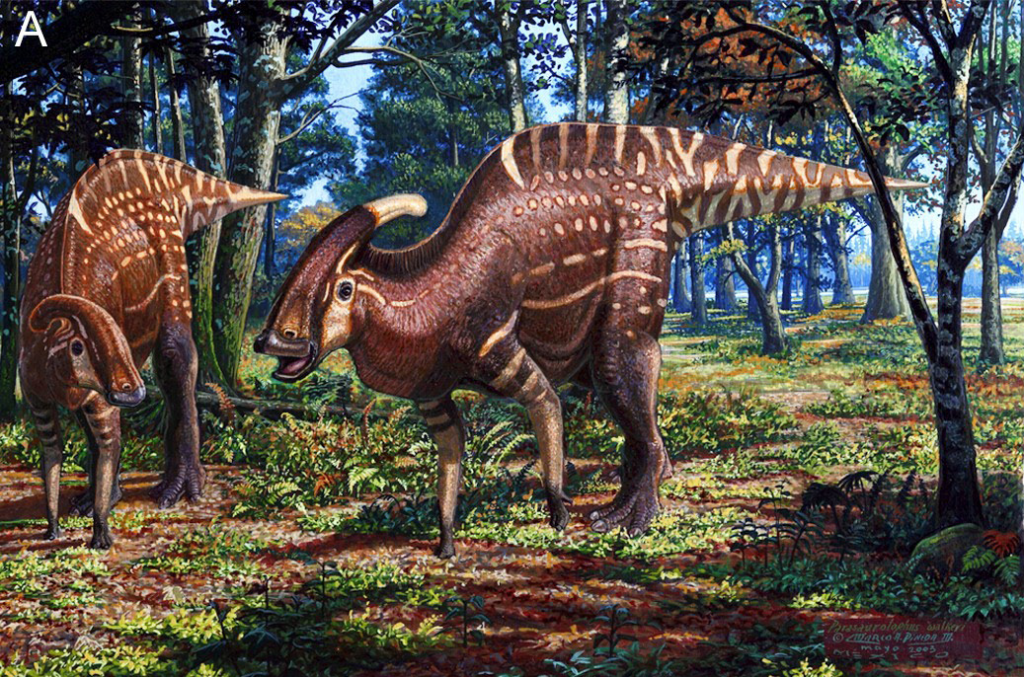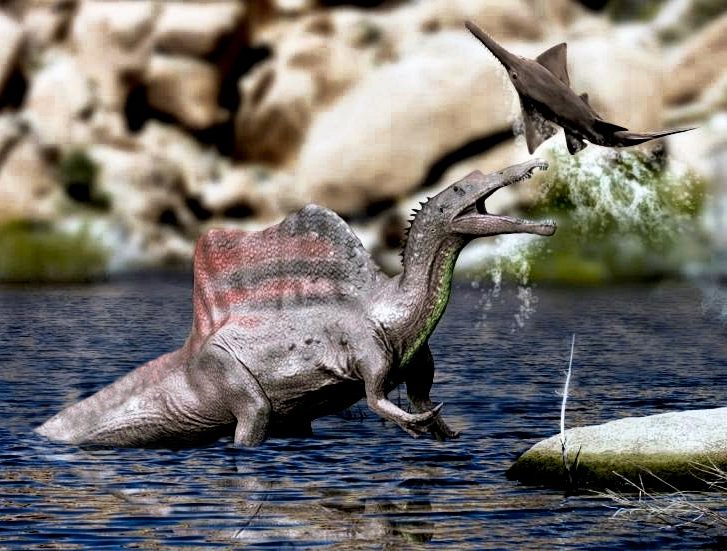The world of paleontology occasionally presents discoveries that challenge our understanding of fossilization processes and how organic material can be preserved over millions of years. Among these remarkable finds are fossils with preserved skin texture—specimens that offer an extraordinary glimpse into the past with details previously thought impossible to survive the ravages of time. These rare treasures reveal intricate patterns of scales, wrinkles, and other surface features that transform our perception of ancient creatures from skeletal outlines to more complete biological entities. The preservation of soft tissue impressions represents one of the most exciting frontiers in fossil studies, offering unprecedented insights into prehistoric life.
The Miracle of Soft Tissue Preservation

Conventional wisdom in paleontology long held that soft tissues decompose rapidly after death, leaving only mineralized hard parts like bones and teeth to become fossils. However, under exceptional circumstances, the seemingly impossible becomes reality—skin textures and other soft tissues can be preserved in remarkable detail. These extraordinary preservation conditions, known as “exceptional preservation” or “conservation lagerstätten,” require specific environmental factors that inhibit decomposition while facilitating mineral replacement of organic structures. Rapid burial in fine-grained, oxygen-poor sediments often plays a crucial role, protecting remains from scavengers and bacterial activity. The resulting fossils with skin texture provide paleontologists with invaluable information about ancient animals’ appearance, behavior, and biology that would otherwise remain forever lost to time. These specimens represent scientific treasures that fundamentally expand our understanding of prehistoric life.
The Dakota Nodosaur: A Breakthrough Discovery

Perhaps the most spectacular example of preserved skin texture comes from the nodosaur specimen unofficially nicknamed “Borealopelta” discovered in Alberta, Canada in 2011. This 110-million-year-old armored dinosaur fossil astounded scientists with its unprecedented level of preservation, including not just skin texture but intact skin with its original coloration patterns still discernible. The fossil was so exceptionally preserved that researchers could determine this massive herbivore likely had reddish-brown coloration on its upper surfaces—revealing camouflage patterns that helped it avoid predators. The nodosaur’s accidental mummification occurred when it was swept out to sea and rapidly buried in marine sediments, creating anoxic conditions that prevented normal decomposition. The specimen’s discovery at the Suncor Millennium Mine represented a watershed moment in paleontology, demonstrating that even details as delicate as skin pigmentation could survive across vast geological timescales under the right circumstances.
Dinosaur Mummies: When Skin Becomes Stone

The phenomenon of “dinosaur mummies” represents some of the most spectacular examples of preserved skin texture in the fossil record. Unlike traditional fossils that preserve primarily bones, these exceptional specimens retain detailed impressions or actual mineralized skin covering substantial portions of the animal’s body. The process creating these mummies typically involves rapid burial and dehydration before significant decomposition can occur, followed by mineral replacement of the remaining tissues. Famous examples include the Edmontosaurus “mummy” discovered by the Sternberg family in 1908, which preserved extensive skin impressions across the dinosaur’s body. These specimens reveal that many dinosaurs had much more complex skin textures than previously imagined, with varied scale patterns across different body regions. The Leonardo specimen, a juvenile Brachylophosaurus discovered in Montana in 2000, preserved not only skin impressions but also evidence of internal organs and the animal’s last meal, providing unprecedented insights into dinosaurian biology and appearance.
The Science Behind Exceptional Preservation

The preservation of skin texture in fossils involves a delicate interplay of chemical and environmental factors that must occur in precise sequence. The first critical step typically requires rapid burial of the organism before significant decomposition begins, often in fine-grained sediments that can capture minute details. Anoxic conditions—environments lacking oxygen—are particularly important, as they inhibit the aerobic bacteria primarily responsible for decomposition. The process of permineralization then occurs as groundwater saturated with dissolved minerals percolates through the sediments, depositing minerals that replace organic tissues or fill the spaces left as tissues decay. Sometimes, bacterial biofilms play a surprising role, forming protective coatings around tissues that help preserve their structure until mineralization can occur. In other cases, the original organic material undergoes chemical transformation, with carbon compounds restructuring into more stable configurations that can persist for millions of years. Understanding these preservation mechanisms helps paleontologists identify environments where exceptionally preserved fossils might be found.
Ichthyosaur Skin: Windows into Marine Reptile Biology

Among the most remarkable instances of preserved skin texture come from ichthyosaurs, dolphin-like marine reptiles that dominated Mesozoic oceans. Several ichthyosaur specimens have been discovered with exquisitely preserved skin impressions that revolutionized our understanding of these animals’ hydrodynamic properties. The skin fossils reveal that ichthyosaurs possessed smooth, scaleless skin similar to modern dolphins rather than the scaled covering of most reptiles—a perfect example of convergent evolution in response to similar aquatic lifestyles. Particularly significant was the discovery that some ichthyosaurs had a dorsal fin and tail fluke not supported by skeletal elements, structures that would never have been known from bones alone. The German Posidonia Shale formations have yielded several specimens showing skin outlines that demonstrate ichthyosaurs were even more streamlined and specialized for aquatic life than their skeletons suggested. These soft tissue impressions proved crucial in accurately reconstructing ichthyosaur appearance and swimming capabilities, fundamentally altering scientific illustrations of these ancient marine predators.
Psittacosaurus: Revealing Dinosaur Coloration
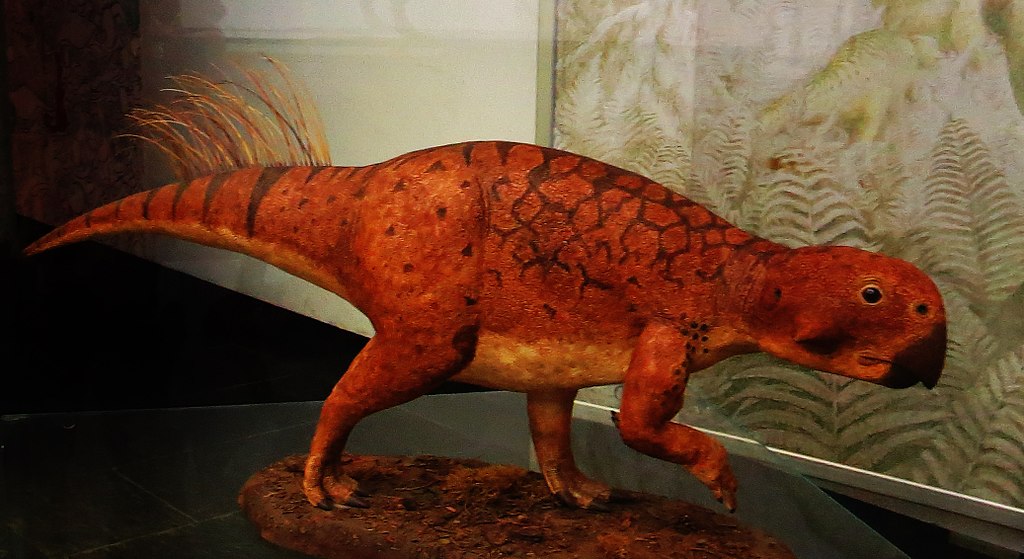
The discovery of a Psittacosaurus specimen with exceptionally preserved skin texture from China’s Jehol Biota has provided unprecedented insights into dinosaur coloration and camouflage strategies. This remarkable fossil preserved not just the texture of the animal’s skin but also melanosomes—cellular structures containing pigments—allowing scientists to reconstruct its actual coloration pattern. Analysis revealed that this early ceratopsian dinosaur exhibited countershading, with a darker upper body and lighter underside, a common camouflage strategy in modern animals that helps break up their outline when viewed by predators. The specimen’s skin showed different scale arrangements across various body regions, with larger, dome-shaped scales along the tail and smaller tubercle-like scales covering most of the body. Perhaps most surprisingly, the fossil revealed a series of bristle-like structures projecting from the tail, structures that would never have been predicted from skeletal evidence alone. This single specimen dramatically expanded our understanding of dinosaur appearance and helped bridge the conceptual gap between dinosaurs and their living bird descendants.
Mummified Dinosaur Tails: Scale Patterns Revealed
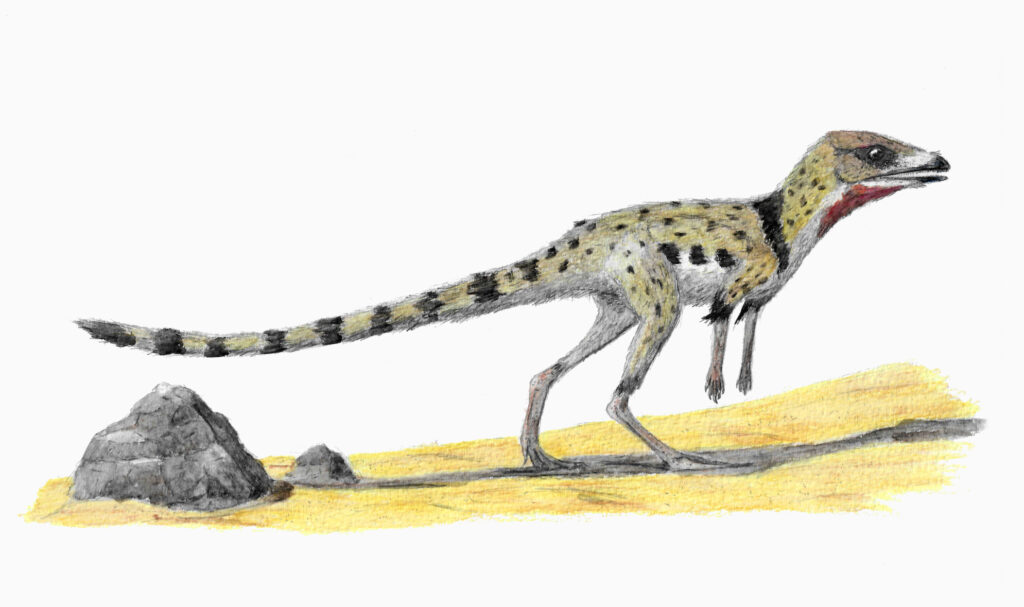
Several spectacular fossils of dinosaur tails with preserved skin have emerged from the Hell Creek Formation in the United States and similar deposits worldwide, offering unprecedented views of scale patterns and external anatomy. These specimens show remarkable variation in scale arrangement, with some hadrosaurs displaying distinct hexagonal scales organized in beautiful geometric patterns across their tails and flanks. The preservation often reveals smaller scales in areas requiring flexibility, such as joints, and larger, more robust scales in exposed areas that might need additional protection. Some specimens even preserve evidence of trauma and healing, with scar tissue visible in the fossilized skin where the animal recovered from injuries during life. These tail specimens hold particular scientific importance because they often preserve the transition between different scale types along the body, allowing paleontologists to map skin patterns across entire animals even when only portions are preserved. The Dakota Formation has yielded several duck-billed dinosaur specimens with “mummified” skin showing that these animals had much more complex external coverings than their skeletons alone would suggest.
Ancient Birds: Feathers Frozen in Time

The preservation of skin textures extends beyond scales to include the most specialized skin structures of all—feathers. The Jehol Biota of China has yielded numerous fossils of ancient birds and feathered dinosaurs with impossibly detailed preservation of these delicate structures. Unlike traditional fossilization that preserves only bones, these specimens often show complete feather outlines, with individual barbs and barbules visible under microscopic examination. The preservation is so exceptional that scientists can distinguish different feather types across the body, from contour feathers to specialized flight feathers, revealing the evolution of plumage arrangements. Particularly significant was the discovery that many non-avian dinosaurs possessed primitive feathers or feather-like structures, fundamentally altering our understanding of feather evolution and dinosaur appearance. The preservation frequently extends to the skin beneath the feathers, showing how these structures emerged from follicles and were arranged across the body surface. These fossils have effectively closed the morphological gap between dinosaurs and birds, demonstrating the incremental evolution of flight-capable plumage from simpler insulating structures.
Exceptional Preservation Sites Worldwide

Certain fossil localities around the world have become famous for their extraordinary preservation of skin textures and other soft tissues. The Solnhofen Limestone in Germany, deposited in a series of hypersaline lagoons during the Late Jurassic, has yielded specimens with exquisite skin impressions, including the famous Archaeopteryx with preserved feather impressions. China’s Jehol Biota represents another preservation miracle, where volcanic ash rapidly buried organisms, preserving skin, feathers, and even color patterns in remarkable detail. The Green River Formation in Wyoming has produced fish fossils so perfectly preserved that individual scales remain visible with their original iridescent sheen still apparent. Brazil’s Araripe Basin contains fossils in which skin and soft tissues were replaced by iron minerals, preserving three-dimensional details of external anatomy. The Messel Pit in Germany preserves mammals with fur impressions and stomach contents intact, while the La Brea Tar Pits in Los Angeles occasionally preserve skin textures on animals trapped in the asphalt. These exceptional sites share characteristics that inhibit decomposition while facilitating mineral replacement, creating time capsules of ancient life with unprecedented detail.
Modern Imaging Techniques Revealing Hidden Details
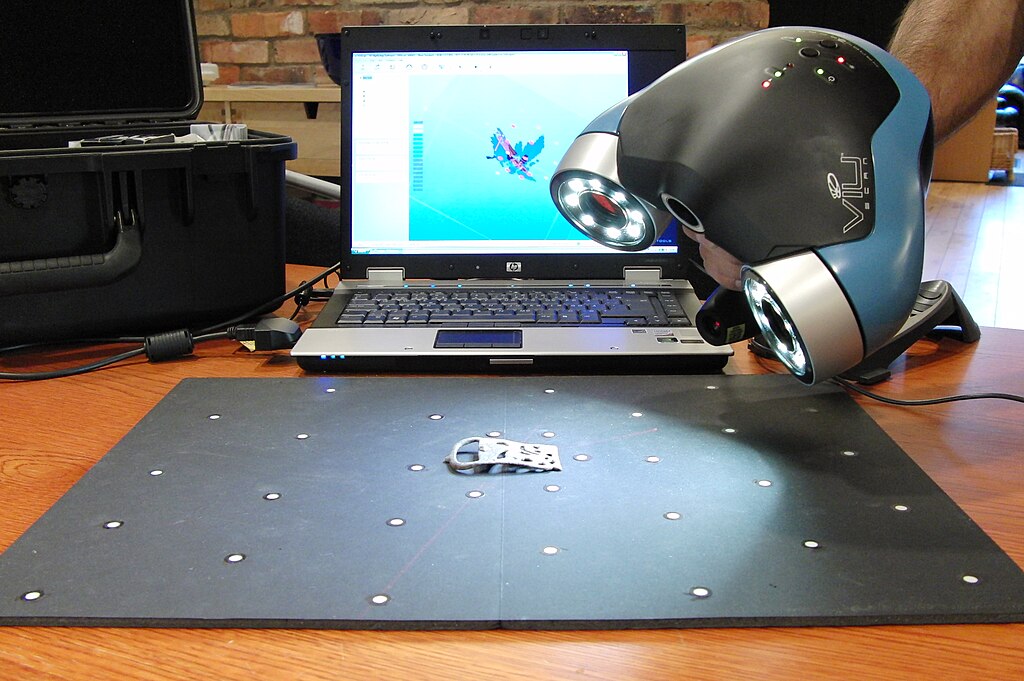
Advancements in scientific imaging technologies have revolutionized the study of fossils with preserved skin textures, revealing details invisible to the naked eye. Scanning electron microscopy (SEM) allows researchers to examine fossilized skin at magnifications exceeding 100,000x, revealing cellular-level details of scales and other structures. Synchrotron radiation techniques can penetrate stone to create three-dimensional models of fossils without damaging them, exposing skin textures hidden within rock matrices. Laser-stimulated fluorescence has proven particularly valuable, causing some organic compounds in preserved skin to glow under specific wavelengths, making otherwise invisible details suddenly apparent. UV photography frequently reveals soft tissue impressions not visible under normal light conditions, as different mineralization patterns fluoresce distinctively. Perhaps most excitingly, chemical analysis techniques can now detect traces of original organic molecules in some exceptionally preserved specimens, potentially revealing the actual chemical composition of ancient skin. These non-destructive techniques continue to extract new information from museum specimens collected decades ago, demonstrating that even well-studied fossils may hold undiscovered secrets about ancient skin textures.
The Challenge of Authenticating Skin Impressions
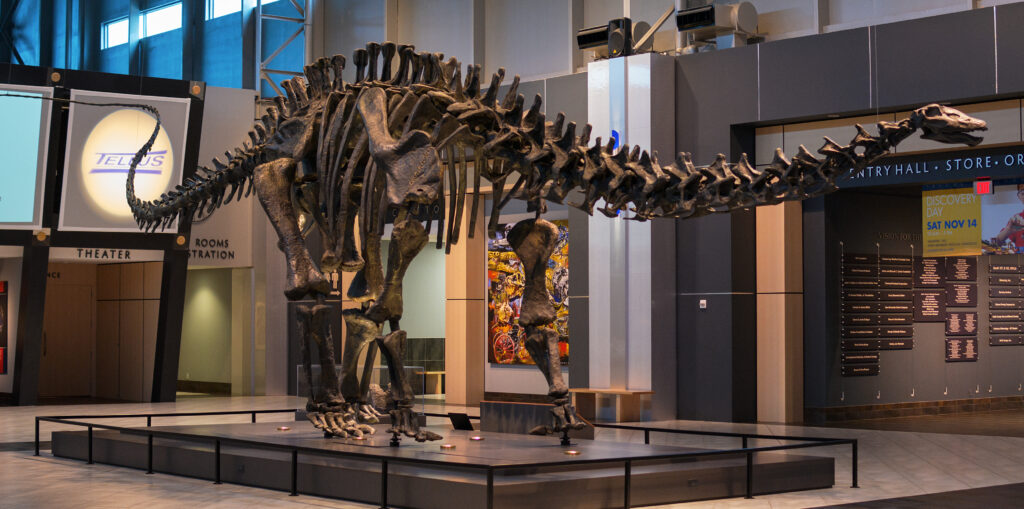
Distinguishing genuine preserved skin texture from misleading sedimentary features represents one of the greatest challenges in studying these exceptional fossils. Paleontologists must carefully evaluate potential skin impressions to rule out pseudofossils—non-biological features that mimic biological structures. Ripple marks, desiccation cracks, and various mineral formations can create patterns remarkably similar to scale impressions, requiring meticulous analysis to confirm biological origin. Authentic skin impressions typically show consistent patterns that conform to biological principles, with scale size and arrangement varying predictably across different body regions. Chemical analysis often proves decisive, as genuine skin impressions frequently preserve traces of original organic compounds or show distinctive mineral replacement patterns different from the surrounding matrix. Unfortunately, the extraordinary scientific and commercial value of fossils with skin impressions has incentivized forgeries, particularly from regions with less regulated fossil markets. Experienced researchers employ multiple lines of evidence, including microscopic examination of scale morphology, stratigraphic context, and geochemical analysis to authenticate questionable specimens. The scientific standard for accepting skin preservation claims has rightfully become increasingly rigorous as analytical techniques have advanced.
What Skin Textures Reveal About Ancient Ecology

Preserved skin textures provide valuable insights into the ecological adaptations and lifestyles of extinct animals beyond what bones alone can tell us. The arrangement, size, and thickness of scales often correlate strongly with environmental conditions and behavioral adaptations. Desert-dwelling species typically show thicker, more tightly overlapping scales that reduce water loss, while aquatic species frequently exhibit streamlined scale patterns that minimize drag. Some preserved dinosaur skin shows evidence of countershading—darker coloration on top and lighter underneath—a camouflage strategy still common in modern animals that suggests which predators they needed to avoid. Particularly revealing are skin structures adapted for specific environments, such as the thickened calluses on hadrosaur knees that suggest these animals spent significant time in a quadrupedal posture. The presence of dermal armor, quills, feathers, or specialized scales indicates different defensive strategies and social behaviors that would remain completely unknown from skeletal evidence. In many cases, skin preservation has revealed that animals occupied ecological niches very different from what had been previously assumed based solely on their bones, fundamentally reshaping our understanding of ancient ecosystems.
Future Frontiers in Skin Texture Research

The study of impossibly preserved skin textures stands at the threshold of exciting new developments that promise to extract even more information from these remarkable fossils. Emerging techniques in molecular paleontology may soon be able to recover and sequence fragments of ancient proteins from exceptionally preserved skin, potentially revealing genetic relationships and biochemical adaptations of extinct species. Advances in computed tomography are increasingly able to differentiate between rock matrix and preserved skin textures within unopened fossil nodules, allowing non-destructive examination of specimens still embedded in their protective stone casings. The application of machine learning algorithms to analyze scale patterns may reveal subtle features indicating evolutionary relationships or environmental adaptations not apparent to human observers. Experimental taphonomy—the study of how organisms decay and become fossilized—continues to improve our understanding of the precise conditions required for skin preservation, potentially guiding researchers to new localities likely to yield these exceptional fossils. Perhaps most exciting is the potential for chemical techniques that can reveal original coloration patterns in preserved skin, literally bringing ancient animals back to life in full color. As these methodologies advance, fossils with preserved skin textures will undoubtedly continue to transform our understanding of prehistoric life.
Conclusion

The impossibly preserved skin textures found in exceptional fossils represent scientific treasures that have fundamentally transformed our understanding of ancient life. These remarkable specimens bridge the gap between skeletons and living animals, revealing coloration patterns, defensive structures, and ecological adaptations that would otherwise remain forever lost to time. As imaging technologies and analytical techniques continue to advance, even well-studied specimens yield new secrets, demonstrating that these fossils hold information we are only beginning to unlock. In the delicate patterns of scales, feathers, and skin folds preserved across millions of years, we find windows into past worlds and creatures that grow increasingly vivid and complete. The impossible has become possible, allowing us to see prehistoric animals not as skeletal outlines but as once-living creatures with complex exteriors that hint at equally complex lives.

